THCA Flower Wholesale Pricing: What to Expect When Buying in Bulk
The THCA flower market has experienced remarkable growth over the past few years, establishing itself as one of the most dynamic segments in the hemp industry. For retailers, dispensaries, and distributors looking to enter or expand their presence in this market, understanding wholesale pricing structures is crucial for maintaining profitability and competitive positioning.
THCA flower prices have evolved significantly since these products first gained mainstream attention. Unlike the early days when pricing was largely speculative and inconsistent, today's market operates with more standardized pricing models influenced by multiple factors including cultivation costs, testing requirements, market demand, and competitive pressures.
When purchasing THCA flower in bulk, buyers encounter a complex pricing landscape shaped by quality variations, potency levels, cultivation methods, seasonal availability, and regional market conditions. The wholesale THCA cost per pound can range dramatically—from budget-friendly options starting around $200 per pound to premium indoor flower commanding $800 or more per pound. This wide variance reflects the diverse needs of different market segments and the quality spectrum available to wholesale buyers.
Understanding these pricing dynamics isn't just about finding the lowest price point. Savvy wholesale buyers recognize that the cheapest option rarely delivers the best value. Instead, successful purchasing strategies balance cost considerations with quality metrics, testing standards, consistency, and supplier reliability. The goal is to secure products that will resonate with your target customers while maintaining healthy profit margins and building a sustainable business model.
As we navigate through 2025, the THCA flower market continues to mature, with bulk THCA prices 2025 reflecting increased competition, improved cultivation techniques, and evolving consumer preferences. This comprehensive guide will equip you with the knowledge needed to make informed purchasing decisions, negotiate favorable terms, and maximize your return on investment in the wholesale THCA market.
Current Market Rates: What You'll Pay Per Pound and Ounce
The wholesale THCA flower market operates on tiered pricing structures that reward volume purchases. Understanding current market rates provides a baseline for evaluating supplier quotes and ensuring you're getting competitive pricing for your purchases.
Per Pound Pricing
The pound of THCA flower cost varies considerably based on quality tier and purchase volume. Here's what buyers can typically expect across different quality categories:
Budget Tier ($200-$350/lb): This entry-level category includes outdoor or greenhouse-grown flower with moderate THCA percentages, typically ranging from 15-20%. While these products meet basic compliance standards, they may have less impressive bag appeal, smaller buds, or slight imperfections that don't meet premium standards. However, for price-conscious retailers or those targeting budget-conscious consumers, these offerings provide accessible entry points into the THCA market.
Mid-Tier ($350-$550/lb): The mid-range represents the sweet spot for many wholesalers, offering greenhouse or light-deprivation grown flower with THCA content between 20-25%. These products typically feature better visual appeal, stronger terpene profiles, and more consistent quality than budget options. This tier serves the majority of mainstream consumers who want quality without premium pricing.
Premium Tier ($550-$800/lb): Premium THCA flower consists of indoor-grown or meticulously cultivated greenhouse products with THCA percentages exceeding 25%, sometimes reaching 30% or higher. These products showcase exceptional trichome density, robust terpene profiles, and superior bag appeal with dense, well-formed buds. Premium flower targets discerning consumers and commands higher retail prices.
Ultra-Premium Tier ($800+/lb): This exclusive category includes exotic strains, limited batches, or exceptionally high-testing flower (30%+ THCA) from renowned cultivators. These products appeal to connoisseur markets and specialty retailers focusing on quality over price competitiveness.
Per Ounce Wholesale Rates
Understanding THCA per ounce wholesale pricing helps retailers calculate profit margins and set competitive retail prices. Breaking down pound pricing into per-ounce rates:
- Budget tier: $12.50-$22/oz
- Mid-tier: $22-$34/oz
- Premium tier: $34-$50/oz
- Ultra-premium: $50+/oz
These per-ounce rates assume full pound purchases. Smaller volume purchases typically carry higher per-unit costs, which we'll explore in the volume-based pricing section.
Market Trends Affecting 2025 Rates
Several factors are influencing wholesale hemp flower prices in 2025. Increased cultivation capacity has introduced more supply into the market, creating downward pressure on prices in some segments. However, this hasn't uniformly affected all quality tiers—premium and ultra-premium categories have maintained relatively stable pricing due to consistent demand from quality-focused consumers.
Additionally, improved cultivation techniques have enabled more growers to produce higher-potency flower, narrowing the gap between mid-tier and premium pricing. What once required specialized indoor facilities can now be achieved through advanced greenhouse cultivation methods, making quality more accessible at various price points.
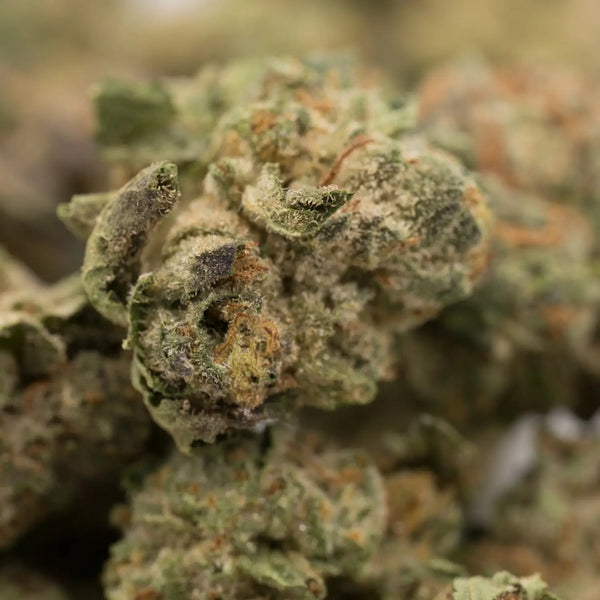
Factors Affecting THCA Flower Wholesale Price
Multiple variables influence THCA flower wholesale rates, and understanding these factors helps buyers evaluate whether quoted prices represent fair value for the quality offered.
Potency and Cannabinoid Profile
THCA percentage stands as the most significant price determinant in wholesale markets. Each percentage point increase in THCA content typically adds $20-$40 per pound to wholesale costs. Flower testing at 28% THCA commands significantly higher prices than 22% THCA flower, even from the same cultivator and strain.
However, potency alone doesn't tell the complete story. The full cannabinoid profile matters, with minor cannabinoids like CBG, CBC, and CBN adding value. Full-spectrum products maintaining diverse cannabinoid profiles often command premiums over THCA-dominant flower with minimal supporting cannabinoids.
Terpene Content and Preservation
Terpene preservation significantly impacts both price and quality. Flower that's been properly cured and stored to maintain terpene integrity commands higher prices than flower that's dried out or has degraded terpenes. Total terpene percentages above 2% typically warrant premium pricing, while exceptional flower may exceed 3% total terpenes.
Specific terpene profiles also influence value. Strains with rare or highly desirable terpene combinations—producing unique flavor profiles or effects—can command premiums regardless of THCA content. Myrcene-dominant, limonene-rich, or pinene-heavy profiles each attract different consumer segments willing to pay more for their preferred experience.
Cultivation Method and Environment
Growing environment dramatically impacts wholesale pricing:
Outdoor cultivation produces the most affordable flower but faces challenges with consistency, weather dependency, and aesthetic quality. Outdoor flower typically falls into budget categories but can offer excellent value when properly cultivated.
Greenhouse cultivation represents the middle ground, providing environmental control while leveraging natural sunlight. Modern greenhouse facilities using light deprivation and climate control systems produce flower competing with indoor quality at lower price points.
Indoor cultivation delivers the highest quality control, producing dense, visually stunning flower with consistent potency and terpene profiles. However, higher operational costs—electricity, HVAC, labor—translate directly into higher wholesale prices.
Visual Appeal and Bag Appeal
Consumers judge cannabis products heavily by appearance, making bag appeal a crucial pricing factor. Factors contributing to superior bag appeal include:
- Bud density and structure
- Trichome coverage and visibility
- Color vibrancy and variation
- Trim quality and presentation
- Absence of seeds, stems, or defects
Premium flower should feature dense, well-formed buds covered in visible trichomes with vibrant colors. Loose, airy buds or flower with excessive leaf material commands lower prices, even with equivalent THCA content.
Testing and Compliance
Comprehensive testing adds costs but provides essential quality assurance. Premium wholesale flower includes testing for:
- Cannabinoid potency profiles
- Terpene analysis
- Pesticide screening
- Heavy metal analysis
- Microbial contamination
- Mycotoxin presence
Flower with complete, clean test results from reputable labs commands higher prices than products with minimal testing. Some buyers prioritize multiple test reports from different laboratories for additional verification, particularly for premium products.
Brand Reputation and Cultivator Track Record
Established cultivators with consistent quality records command premium pricing based on reputation alone. Buyers pay more for known quantities from trusted sources rather than gambling on unknown suppliers offering lower prices. Brand equity, reliability, and customer service factor into wholesale pricing beyond just the flower itself.
Volume-Based Pricing Tiers: Maximizing Savings Through Scale
One of the most significant advantages of bulk THCA flower deals comes from volume-based pricing discounts. Wholesale suppliers structure pricing to incentivize larger orders, creating substantial per-unit savings as purchase quantities increase.
Single Pound Purchases ($400-$800/lb)
Buying individual pounds typically represents the least economical wholesale option, but it serves important purposes for smaller retailers, those testing new strains, or businesses maintaining product diversity without excessive inventory. Single-pound rates usually sit at the upper end of each quality tier's price range.
For example, mid-tier flower might range from $350-$550 per pound, with single-pound purchases typically falling between $450-$550. This higher per-unit cost reflects the supplier's packaging, handling, and transaction costs being spread across smaller volumes.
Small Volume (5-10 lbs): $350-$700/lb
Stepping up to 5-10 pound purchases unlocks the first tier of meaningful discounts, typically 10-15% off single-pound rates. This volume level suits small dispensaries, startup brands, or retailers testing multiple strains before committing to larger quantities.
At this level, that same mid-tier flower drops from $450-$550 to approximately $380-$480 per pound—a savings of $70 per pound that compounds significantly across the entire purchase. For a 10-pound order, this discount tier saves $700 compared to buying 10 individual pounds.
Medium Volume (25-50 lbs): $300-$600/lb
Medium volume purchases represent serious wholesale commitment and unlock 20-25% discounts from single-pound pricing. This level suits established retailers, regional distributors, or brands with consistent sales volumes requiring regular restocking.
The savings become substantial at this tier. Mid-tier flower previously costing $450-$550 per pound now runs $320-$420 per pound. On a 50-pound order, this discount saves $6,500 compared to single-pound pricing—enough to add an additional 12-15 pounds of product to your order for the same total cost.
Large Volume (100+ lbs): $250-$500/lb
Large volume purchases—100 pounds or more—unlock maximum discount potential, with savings of 30-40% off single-pound rates. This tier suits major distributors, multi-location retailers, or white-label brands requiring significant inventory.
At this level, mid-tier flower that cost $450-$550 per pound drops to $280-$350 per pound. On a 100-pound purchase, these volume discounts save $17,000-$20,000 compared to single-pound pricing. These savings can be passed on to retail customers for competitive pricing or retained as improved profit margins.
Custom Volume Pricing for Major Buyers
Purchases exceeding 500-1,000 pounds often trigger custom pricing negotiations. At this scale, buyers work directly with cultivators or primary distributors, sometimes negotiating forward contracts, exclusive arrangements, or custom cultivation runs. These mega-volume deals can achieve cheap THCA wholesale pricing below standard wholesale rates, sometimes dropping below $200 per pound for budget tiers or $400 per pound for premium flower.
Calculating Your Optimal Order Volume
Determining your ideal purchase volume requires balancing multiple factors:
Capital availability: Don't overextend your budget by ordering volumes you can't afford, even with attractive discounts.
Storage capacity: Ensure you have proper storage facilities maintaining product freshness across your inventory period.
Sales velocity: Calculate how quickly you move product. A six-month supply at heavily discounted prices offers no advantage if the flower degrades in storage.
Product diversity: Balance volume discounts against the need to offer variety. Sometimes maintaining 10 different strains at lower volumes serves customers better than maximum discounts on limited options.
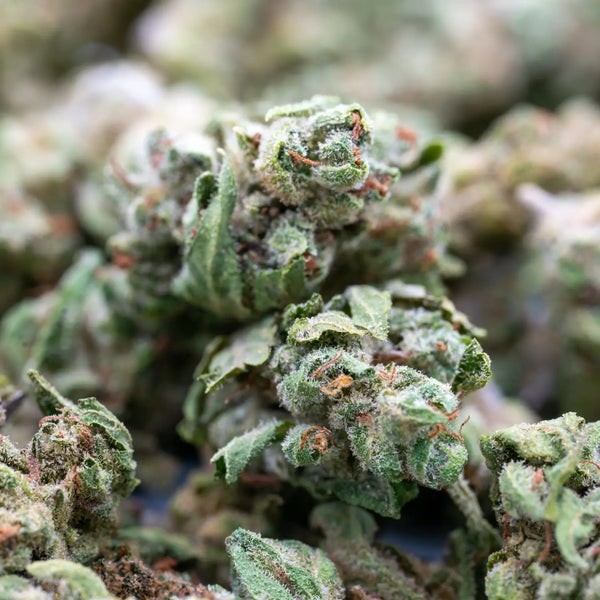
Seasonal Price Variations: Timing Your Wholesale Purchases
Like agricultural commodities, THCA bulk pricing fluctuates seasonally based on harvest cycles, demand patterns, and market dynamics. Strategic buyers time purchases to capture the best pricing while maintaining consistent inventory.
Fall Harvest Season (September-November)
The fall harvest season represents peak supply as outdoor and greenhouse crops reach maturity. This influx of fresh flower typically drives prices downward by 15-25% across all quality tiers as cultivators compete for buyer attention and cash flow to fund operations through winter.
This seasonal dip creates prime buying opportunities for businesses with adequate storage. Purchasing 3-6 months of inventory during fall harvest can yield significant annual savings. However, buyers must ensure proper storage to maintain quality—bulk purchases only save money if the product remains sellable throughout the storage period.
Winter Low Season (December-February)
Post-harvest inventory levels remain elevated through early winter, maintaining favorable pricing. However, as inventory depletes and fresh product becomes scarce, prices begin trending upward in late winter, typically increasing 10-15% from fall lows.
Winter represents a strategic time for established buyers to negotiate favorable terms with cultivators seeking to move remaining inventory before spring planting requires capital investment.
Spring Pre-Season (March-May)
Spring marks the beginning of the next growth cycle, with inventory from fall harvest depleting and new crops months away. Prices typically reach annual peaks during this period, rising 20-30% above fall harvest lows. Supply constraints and increasing demand as retailers deplete winter inventory create seller-favorable market conditions.
Buyers who stocked adequately during fall harvest gain competitive advantages during this period, either maintaining price stability for customers or capturing improved margins as market prices rise.
Summer Mid-Season (June-August)
Early summer continues the high-price environment as most inventory from previous harvest has moved through distribution channels. However, anticipation of upcoming fall harvest may temper price increases, creating relatively stable mid-range pricing.
Late summer sometimes offers opportunities as cultivators begin pre-selling harvest allocations, offering modest discounts to secure committed buyers and guaranteed cash flow for harvest operations.
Strategic Seasonal Buying
Optimize your purchasing strategy by:
Building inventory during fall: Secure 40-60% of annual needs during harvest season at lowest prices.
Maintaining baseline inventory: Keep 2-3 months of fast-moving products year-round, avoiding complete inventory depletion.
Making strategic fills: Purchase smaller quantities during high-price periods only for essential restocking.
Diversifying suppliers: Work with multiple cultivators with staggered harvest schedules, creating opportunities for favorable pricing year-round.
Regional Price Differences: Location Matters in Wholesale Markets
Geographic location significantly impacts wholesale hemp flower prices, with regional variations creating opportunities for strategic buying or challenges requiring careful supplier selection.
West Coast Markets (Oregon, California, Washington)
West Coast states, particularly Oregon, represent the most competitive wholesale markets with the lowest average prices. Established hemp infrastructure, favorable growing conditions, and abundant cultivation create highly competitive pricing environments. Buyers in these regions regularly access budget flower at $200-$300/lb, mid-tier at $300-$450/lb, and premium at $450-$650/lb.
Oregon specifically has emerged as a pricing leader due to oversupply situations creating buyer-favorable conditions. However, buyers must carefully vet quality as low prices sometimes reflect excess inventory or lower-grade products being moved quickly.
Mountain States (Colorado, Montana)
Mountain states offer moderate pricing, typically 10-15% above West Coast rates. Colorado's mature hemp industry provides competitive pricing, though not quite matching Oregon or California levels. These markets balance favorable growing conditions with strong local demand, creating stable pricing without extreme volatility.
Midwest Markets (Illinois, Michigan, Ohio)
Midwest wholesale prices typically run 15-25% higher than West Coast rates due to fewer local cultivators and transportation costs from major growing regions. However, emerging cultivation in these states is gradually narrowing the price gap, with Michigan particularly developing strong local production capabilities.
East Coast Markets (Florida, North Carolina, Virginia)
East Coast pricing generally sits 20-30% above West Coast levels, reflecting transportation costs, fewer large-scale cultivators, and strong regional demand. Florida's emerging hemp industry is developing production capacity, though buyers still often source from West Coast suppliers shipped across country.
Transportation and Logistics Impact
Shipping costs significantly impact effective wholesale pricing for remote buyers. A pound of flower costing $400 in Oregon might carry $50-$100 in shipping to East Coast destinations, effectively increasing cost by 12-25%. Buyers must factor these logistics costs into pricing comparisons between local suppliers and distant cultivators offering lower base prices.
Volume shipping provides some relief, with per-pound transportation costs decreasing as shipment size increases. A single pound might cost $75 to ship while 100 pounds might average $15-$20 per pound in shipping costs.
Strategic Regional Buying
Optimize regional pricing by:
Exploring local sources: Even with higher per-pound costs, eliminating shipping may provide better total landed costs.
Coordinating group purchases: Partner with other local buyers to share shipping costs on large orders from distant suppliers.
Establishing West Coast connections: Develop relationships with Oregon or California suppliers offering the best baseline pricing, even if transportation adds costs.
Balancing source diversity: Use both local and distant suppliers, with local sources for quick restocking and distant suppliers for planned bulk purchases.
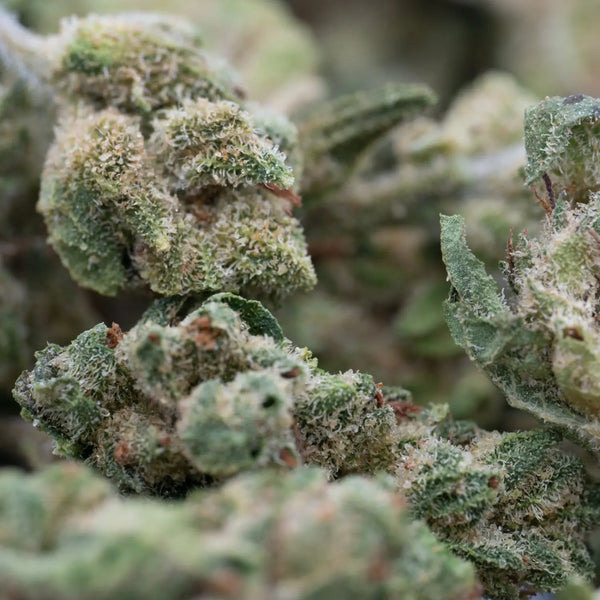
Premium vs Budget Flower: Understanding the Value Proposition
The cheap THCA wholesale market offers compelling value propositions, but savvy buyers understand that the lowest price doesn't always deliver the best business outcomes. Balancing premium and budget options requires understanding your market, customer expectations, and profit optimization strategies.
Budget Flower Characteristics
Budget THCA flower typically features:
- Outdoor or basic greenhouse cultivation
- THCA content 15-22%
- Moderate terpene profiles (1-2%)
- Acceptable but unexceptional bag appeal
- Less consistent bud size and structure
- Minimal exotic or rare strains
- Basic testing (potency only)
Budget flower serves price-sensitive consumers, bulk buyers, extraction companies, or businesses prioritizing volume over premium positioning. When properly cultivated and stored, budget flower can deliver satisfactory consumer experiences at accessible price points.
Premium Flower Characteristics
Premium THCA flower offers:
- Indoor or advanced greenhouse cultivation
- THCA content 25-30%+
- Robust terpene profiles (2-3%+)
- Exceptional bag appeal and visual quality
- Consistent, dense bud structure
- Access to exotic and rare strains
- Comprehensive testing including terpenes, contaminants
Premium flower targets discerning consumers, connoisseur markets, or businesses building brand reputation around quality. Higher wholesale costs translate to higher retail pricing, but margins often improve as consumers willingly pay premiums for superior products.
The Mid-Tier Sweet Spot
Many successful wholesale buyers focus primarily on mid-tier flower, finding optimal balance between cost and quality. Mid-tier products typically feature:
- Greenhouse or light-dep cultivation
- THCA content 20-25%
- Good terpene preservation (1.5-2.5%)
- Solid bag appeal meeting mainstream expectations
- Reasonable consistency and quality control
- Comprehensive strain selection
- Full testing panels
Mid-tier flower serves the broadest consumer segment—customers wanting quality and value without luxury pricing. This segment often delivers optimal profit margins by balancing wholesale costs against retail pricing power.
Strategic Product Mix
Successful wholesalers typically maintain diverse inventories:
40-50% mid-tier: Core inventory serving mainstream customers 20-30% budget: Value options for price-conscious customers 20-30% premium: Quality options for discerning consumers and special occasions
This mix strategy maximizes market coverage while optimizing inventory investment. Budget options capture price-sensitive customers, mid-tier products form your profit foundation, and premium products enhance brand perception and capture high-margin opportunities.
Calculating True Value
When comparing THCA flower prices, calculate value beyond per-pound costs:
Cost per percentage point THCA: Divide price by THCA percentage for standardized comparison. Flower at $400/lb with 25% THCA costs $16 per percentage point, while $300/lb flower at 18% THCA costs $16.67 per percentage point—making the higher-priced option actually better value.
Turnover velocity: Premium flower might move more slowly but command better margins. Budget flower moves quickly but at thinner margins. Calculate profit per day of inventory rather than profit per unit.
Customer satisfaction and retention: Quality products build loyal customers generating repeat business and referrals—value not captured in simple per-pound calculations.
Payment Terms and Their Impact on Wholesale Pricing
Payment structures significantly influence final costs for bulk THCA flower deals, with various payment terms offering different advantages and pricing implications.
Cash on Delivery (COD)
COD represents the standard payment structure in hemp markets, with buyers paying immediately upon product delivery. This arrangement typically yields baseline pricing without discounts or surcharges. COD eliminates credit risk for sellers while requiring buyers to maintain adequate liquidity for purchases.
Prepayment Discounts
Paying before product shipment often unlocks 5-10% discounts as sellers reward buyers for eliminating payment risk and improving cash flow. For large orders, these prepayment discounts can generate substantial savings—$2,000-$5,000 on a 100-pound order.
However, prepayment carries risks. Buyers should only prepay with established, trusted suppliers with proven track records. Prepayment to unknown suppliers risks product non-delivery, quality issues, or supply chain problems with limited recourse.
Net Terms (Net 15, Net 30)
Some established relationships support net payment terms, allowing buyers to pay 15-30 days after delivery. These terms provide crucial cash flow advantages, enabling businesses to sell inventory before paying suppliers. However, net terms typically carry 5-10% price premiums as sellers price in credit risk and delayed cash flow.
Net terms usually require strong business credentials, including established operating history, solid credit, and often personal guarantees. New buyers rarely secure net terms until demonstrating reliability through several cash purchases.
Cryptocurrency Payment Options
Some suppliers offer modest discounts (2-5%) for cryptocurrency payments, valuing transaction finality, lower payment processing costs, and certain regulatory advantages. However, crypto payments require technical knowledge and accepting price volatility risks between payment and conversion to fiat currency.
Payment Method Fees
Payment method affects net costs:
Cash: Zero fees but carries logistics and security challenges for large purchases ACH/Wire Transfer: Minimal fees ($0-$30 per transaction), ideal for large orders Credit Cards: 2-4% processing fees typically passed to buyers, though rewards programs might offset costs Cryptocurrency: Network transaction fees vary by currency and network congestion
Negotiating Payment Terms
Improve payment terms by:
Building supplier relationships: Demonstrate reliability through consistent purchasing and prompt payment before requesting favorable terms.
Offering volume commitments: Secure better terms by committing to regular, predictable purchase volumes.
Providing references: Strong business references and financial credentials support negotiating net terms or better pricing.
Strategic timing: Suppliers facing cash flow needs (e.g., before harvest investments) may offer better terms for committed payments.
Negotiating Better Wholesale Prices: Strategies for Success
Successful negotiation of wholesale THCA cost per pound requires understanding supplier motivations, market conditions, and effective negotiation strategies that create win-win outcomes.
Market Research and Competitive Intelligence
Enter negotiations armed with market knowledge. Research multiple suppliers' pricing, understand current market rates for different quality tiers, and track seasonal trends. This information provides leverage and prevents accepting inflated pricing.
Request quotes from 3-5 suppliers before major purchases, comparing not just prices but also quality indicators, testing protocols, and terms. This competitive shopping establishes baseline pricing and provides negotiating leverage with preferred suppliers.
Volume Commitments
Suppliers value predictable business, making volume commitments powerful negotiating tools. Rather than requesting better pricing on individual orders, negotiate preferential rates in exchange for committed purchasing volumes over defined periods.
For example: "We typically purchase 20-30 pounds monthly across various strains. If we commit to sourcing exclusively from you for the next six months—approximately 150 pounds total—what volume pricing can you offer?"
This approach demonstrates valuable long-term business while justifying supplier concessions.
Relationship Building
Hemp wholesale operates significantly on relationships. Invest time building genuine connections with suppliers through:
- Regular communication beyond transactions
- Prompt payment and professional conduct
- Feedback on product performance
- Understanding their business challenges and opportunities
- Referrals to other qualified buyers
Strong relationships yield better pricing, priority access to limited products, flexible terms during difficulties, and insider knowledge about market developments.
Strategic Timing
Leverage timing for negotiating advantages:
End of quarter/year: Suppliers meeting sales targets may offer better pricing to close additional business.
Post-harvest: Abundant inventory creates buyer-favorable negotiations.
Pre-harvest: Cultivators seeking committed buyers may offer discounts for forward purchase commitments.
Slow periods: During slower business cycles, suppliers may negotiate more readily to maintain cash flow.
Value-Added Requests
Sometimes suppliers can't lower prices but can add value through:
- Enhanced testing at no additional cost
- Better packaging or presentation
- Free shipping or shared logistics costs
- Extended payment terms
- Sample products for testing
- Marketing support or co-branding opportunities
These value additions improve your effective costs even if per-pound pricing remains unchanged.
Professional Negotiation Approaches
Effective negotiation requires:
Respectful, direct communication: Clearly state your needs and expectations without aggressive tactics.
Understanding supplier costs: Unrealistic lowball offers damage relationships. Show respect for suppliers' cost structures while seeking fair pricing.
Win-win framing: Position negotiations as finding mutual benefit rather than extracting maximum concessions.
Patience: Don't rush major commitments. Quality suppliers appreciate thoughtful buyers making informed decisions.
Flexibility: If pricing won't budge, explore other valuable concessions like improved terms, enhanced services, or additional products.
Red Flags to Avoid
Walk away from:
Unrealistic pricing: If prices seem too good to be true, they probably are. Dramatically below-market pricing may indicate quality issues, scams, or unsustainable business practices.
Pressure tactics: Legitimate suppliers don't pressure immediate decisions. High-pressure sales tactics suggest problems.
Lack of transparency: Reputable suppliers readily provide testing, licensing, and business information. Evasiveness indicates potential issues.
Inconsistent communication: Professional suppliers maintain consistent, clear communication. Poor communication during sales typically worsens post-purchase.
Conclusion: Getting Best Value for Quality in THCA Wholesale
Successfully navigating the THCA flower wholesale rates landscape requires balancing multiple considerations beyond simply finding the lowest per-pound prices. The most profitable wholesale strategies optimize the intersection of cost, quality, reliability, and customer satisfaction.
Effective wholesale buying starts with deep market understanding. Know current pricing across quality tiers, seasonal variations, regional differences, and volume-based discounting structures. This knowledge empowers informed decision-making and effective supplier negotiations.
Quality assessment skills prove equally crucial. The ability to evaluate THCA flower based on potency, terpene content, cultivation method, bag appeal, and testing comprehensiveness allows you to identify true value rather than just low prices. Remember: the cheapest option rarely represents the best business decision when factoring in customer satisfaction, product turnover, and profit margins.
Strategic purchasing approaches maximize value through volume commitments that unlock tiered pricing discounts, seasonal timing that captures harvest season advantages, and relationship development that yields preferential treatment and insider opportunities. Successful buyers think beyond individual transactions, building sustainable supplier relationships that provide long-term competitive advantages.
Diversification provides insurance against market volatility and supply chain disruptions. Maintaining relationships with multiple suppliers across different quality tiers and geographic regions ensures consistent inventory availability while preserving negotiating leverage through competitive alternatives.
Finally, remember that wholesale success ultimately depends on retail success. The best wholesale strategy aligns with your target customers' expectations, preferences, and willingness to pay. Whether targeting budget-conscious consumers with value options, mainstream customers with quality mid-tier products, or connoisseurs with premium selections, ensure your wholesale purchasing strategy supports your retail positioning and brand identity.
The THCA flower wholesale market offers tremendous opportunities for buyers who approach it with knowledge, strategy, and professionalism. By understanding market dynamics, evaluating quality effectively, negotiating skillfully, and building strong supplier relationships, you can secure excellent bulk THCA prices 2025 that support profitable, sustainable business growth.
Whether you're just entering the market or looking to optimize existing wholesale operations, the principles outlined in this guide provide a framework for success. Start with thorough market research, carefully evaluate suppliers and products, negotiate professionally for win-win outcomes, and continuously refine your approach based on market feedback and changing conditions.
The wholesale THCA market rewards preparation, knowledge, and strategic thinking. Apply these insights to your purchasing decisions, and you'll be well-positioned to secure quality products at competitive prices that drive business success.
Frequently Asked Questions About THCA Wholesale Pricing
Q: What is the average wholesale price for a pound of THCA flower in 2025?
A: The pound of THCA flower cost typically ranges from $250-$800 depending on quality tier, potency, cultivation method, and purchase volume. Budget outdoor flower starts around $200-$350/lb, mid-tier greenhouse flower runs $350-$550/lb, premium indoor flower costs $550-$800/lb, and ultra-premium or exotic selections may exceed $800/lb. Volume discounts significantly reduce per-pound costs, with 100+ pound purchases potentially saving 30-40% compared to single-pound pricing.
Q: How much can I save buying THCA flower in bulk?
A: Volume-based pricing creates substantial savings opportunities. Single-pound purchases typically cost full retail wholesale rates, while 5-10 pound purchases unlock 10-15% discounts, 25-50 pound orders save 20-25%, and 100+ pound purchases can save 30-40% or more. On a 100-pound order of mid-tier flower, volume discounts might save $15,000-$20,000 compared to buying individual pounds, effectively providing an additional 30-40 pounds of free product.
Q: When is the best time of year to buy wholesale THCA flower?
A: Fall harvest season (September-November) typically offers the best pricing, with abundant fresh inventory driving prices 15-25% below annual averages. Late winter (January-February) provides secondary opportunities as cultivators move remaining inventory before spring planting. Spring (March-May) generally features the highest prices due to depleted inventory and increasing demand. Strategic buyers stock 40-60% of annual needs during fall harvest to maximize savings.
Q: What's the difference between cheap and premium THCA flower?
A: Cheap THCA wholesale typically features outdoor cultivation, moderate potency (15-22% THCA), basic terpene profiles, acceptable but unremarkable bag appeal, and minimal testing. Premium flower offers indoor or advanced greenhouse cultivation, higher potency (25-30%+ THCA), robust terpene profiles (2-3%+), exceptional visual quality, comprehensive testing, and rare or exotic genetics. The quality difference affects consumer satisfaction, retail pricing power, and overall business positioning—cheap doesn't always mean best value when considering these factors.
Q: Do wholesale prices vary by region?
A: Yes, wholesale hemp flower prices vary significantly by region. West Coast states (Oregon, California, Washington) offer the lowest prices due to established cultivation infrastructure and competitive markets. Mountain states run 10-15% higher, Midwest markets run 15-25% higher, and East Coast regions typically cost 20-30% above West Coast prices. However, transportation costs must be factored—shipping from Oregon to East Coast might add $50-$100 per pound, potentially making local suppliers more economical despite higher base prices.
Q: How do I calculate the true value of wholesale THCA flower?
A: Calculate cost per THCA percentage point by dividing price by potency percentage. Flower at $450/lb with 25% THCA costs $18 per point, while $350/lb flower at 18% THCA costs $19.44 per point—making the higher-priced option better value. Also consider turnover velocity (profit per day of inventory), bag appeal's impact on sales speed, terpene content affecting consumer satisfaction, testing comprehensiveness reducing risk, and supplier reliability ensuring consistent availability. True value reflects the complete picture beyond simple per-pound pricing.
Q: Can I negotiate better wholesale THCA prices?
A: Yes, negotiation can improve THCA per ounce wholesale pricing through volume commitments, establishing long-term supplier relationships, strategic timing (end of quarter/year, post-harvest periods), prepayment in exchange for discounts, and competitive quotes creating negotiating leverage. Professional, respectful negotiation focusing on win-win outcomes yields best results. If pricing won't budge, negotiate value additions like enhanced testing, better packaging, free shipping, extended payment terms, or complimentary samples for new strains.
Q: What volume should I order to get the best bulk discount?
A: Optimal order volume depends on capital availability, storage capacity, and sales velocity. While 100+ pound orders unlock maximum discounts (30-40% off single-pound pricing), only order volumes you can store properly and sell before quality degradation. Many buyers find 25-50 pounds offers the best balance—substantial discounts (20-25% off) without excessive capital commitment or storage challenges. Calculate your monthly sales velocity and order 2-4 months of inventory to balance discounts against turnover needs.
Q: Is prepaying for wholesale THCA flower worth the discount?
A: Prepayment often yields 5-10% discounts—on a 100-pound order at $400/lb ($40,000), saving $2,000-$4,000. However, only prepay with established, trusted suppliers with proven track records, verifiable licensing, strong references, and multiple successful transactions. Prepayment to unknown suppliers risks product non-delivery, quality misrepresentation, or supply chain problems with limited recourse. If supplier credibility is uncertain, the prepayment discount doesn't justify the risk.
Q: How do payment terms affect wholesale pricing?
A: COD provides baseline pricing, prepayment typically offers 5-10% discounts, and net payment terms (Net 15/30) usually carry 5-10% premiums. Credit card payments add 2-4% processing fees often passed to buyers, while ACH/wire transfers carry minimal fees ($0-30 per transaction). Cryptocurrency payments sometimes receive 2-5% discounts. Calculate effective total costs including payment method fees, discounts/premiums, and cash flow impacts when comparing THCA bulk pricing across suppliers.
Q: What red flags should I watch for when buying wholesale THCA?
A: Avoid suppliers offering unrealistic pricing dramatically below market rates (likely quality issues or scams), using high-pressure sales tactics forcing rushed decisions, lacking transparency about testing/licensing/business information, maintaining inconsistent or poor communication, refusing references from existing customers, unwilling to provide samples before major purchases, or requesting unusual payment methods (gift cards, untraceable transfers). Legitimate, professional suppliers welcome due diligence, provide comprehensive information, and maintain transparent, respectful communication throughout the sales process.
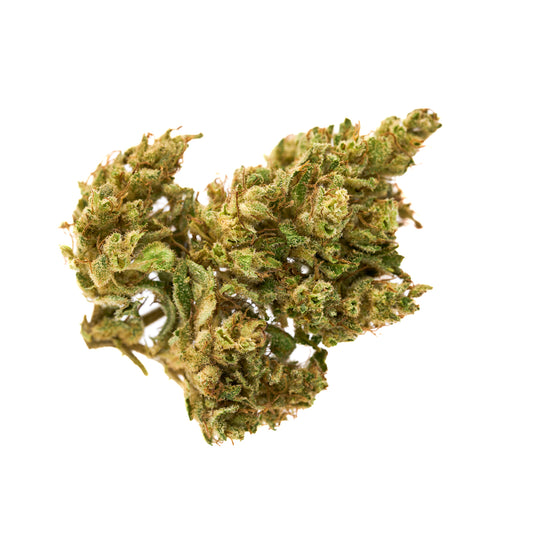
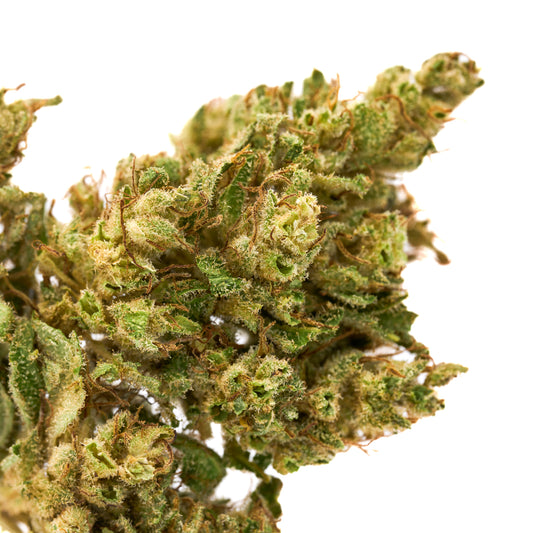
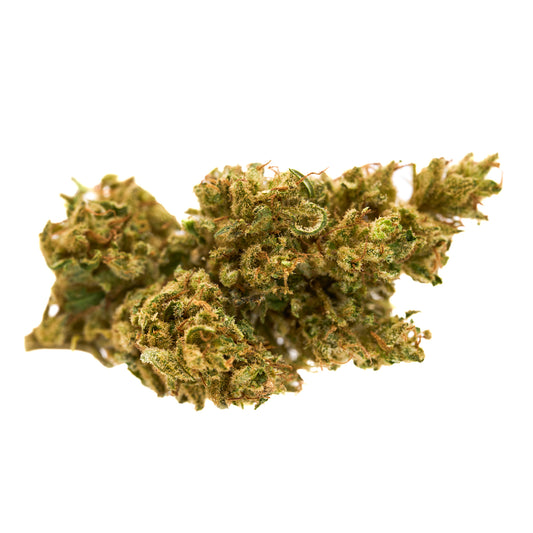
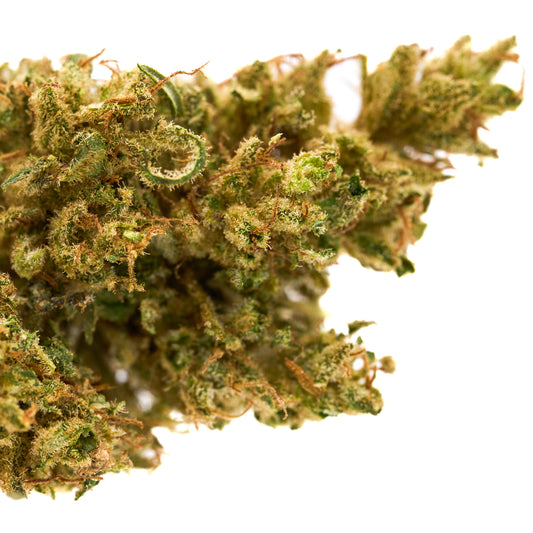
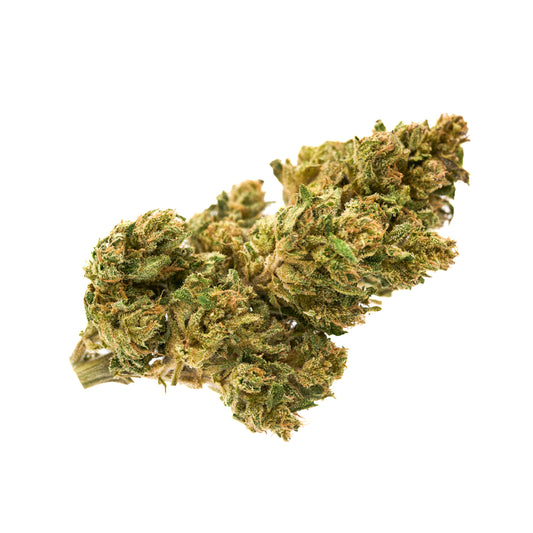
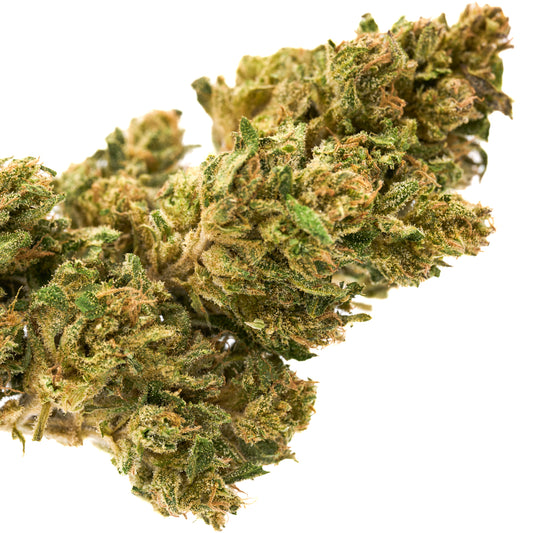


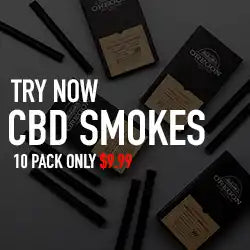
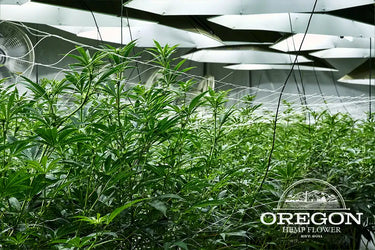

Leave a comment
Please note, comments need to be approved before they are published.